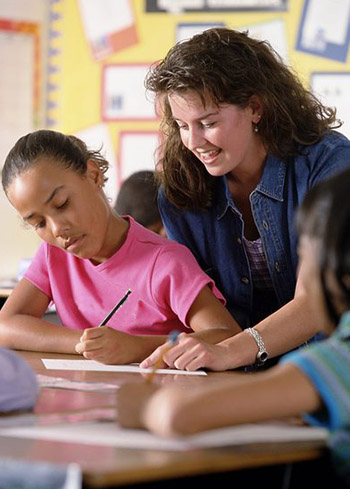by Janet Renda
One-to-one paraprofessionals are often considered highly desirable in special education settings as a means of ensuring that a student with a significant learning, physical or behavioral profile will have more consistent access to an adult’s attention, increased engagement and better access to the curriculum. Conventional wisdom would dictate that the provision of one-to-one support increases the likelihood that the student will make gains across all domains and provide a distinct academic advantage.
 However, one-to-one paraprofessionals are considered to be an extraordinary service and their addition to an educational program increases the level of restriction within the given placement.
However, one-to-one paraprofessionals are considered to be an extraordinary service and their addition to an educational program increases the level of restriction within the given placement.
In order to remain faithful to educating students in the least restrictive environment, consideration should be given to clearly identifying the purpose and the function of the one-to-one paraprofessional; adapting, modifying and teaching skills needed to increase student independence and autonomy; and when possible fading the one-to-one paraprofessional to a more naturalistically occurring ratio.
The first step in responsible use of one-to-one paraprofessionals is to identify the purpose and the function of the assignment. Ideally, this functional assessment is conducted by an interdisciplinary team that systematically assesses the student’s ability to access the curriculum from the behavioral, cognitive and motoric standpoints. Key consideration must be given to learning readiness or learning to learn behaviors, safety in the school environment, and the ability to interact with curriculum. Once these areas are carefully considered, the student’s needs as related to the provision of one-to-one paraprofessional services can be identified and a rationale for one-to-one generated.
Once the purpose and function of the one-to-one is clearly identified in the rationale, it becomes necessary to turn one’s attention to developing goals and objectives related to the skill deficits and/or behavioral excesses that the student presents that interfere with his or her ability to participate in the educational environment under less restrictive conditions. Again, this process should be regarded as a collaborative effort by the interdisciplinary team. These goals and objectives should be measurable, observable and objective. Ensuring that these criteria are met will enable the goals and objectives to be integrated into the student’s IEP and systematically taught with the same level of intensity as other aspects of the curriculum. This allows all members of the team to make data-based decisions about the effectiveness of the one-to-one paraprofessional in providing instructional and support strategies that remediate the presenting skill deficits, behavioral excesses and curriculum access limitations. In this positive problem solving approach, the interdisciplinary team is essentially prompted to monitor specific student outcomes for the purpose of progress reporting which eliminates the likelihood that these concerns are simply shifted to the one-to-one paraprofessional to manage without a specific outcome in mind.
The final step in the responsible use of one-to-one paraprofessionals is the generation of a fade-out plan. Again, when possible, the goal of providing one-to-one services would be to remediate the presenting needs sufficiently to integrate the student into a more naturally occurring student:teacher ratio. This fade-out plan should include clear performance indicators related to the previously defined goals and objectives and sound educational practices to systematically decrease the amount of assistance that the student needs, the intrusiveness of prompting, and the proximity needed between the student and the staff member. Each of these changes in the interaction between the one-to-one paraprofessional and the student, will lessen the student’s separation from classmates and the dependence or reliance on the assigned paraprofessional. The ultimate goal of the paraprofessional fade-out plan is to have a student who is able to demonstrate competent engagement in the educational placement with the least restrictive amount of supports.
One-to-one paraprofessionals are a beneficial extraordinary service for many students across a continuum of educational classifications. It is vital to consider their roles as potentially temporary, as students are enabled to participate in the least restrictive instructional setting while deriving the appropriate educational benefit.
Janet Renda is an educator and behavior specialist at Hawkswsood School, a state approved private special education school in Eatontown, NJ.


